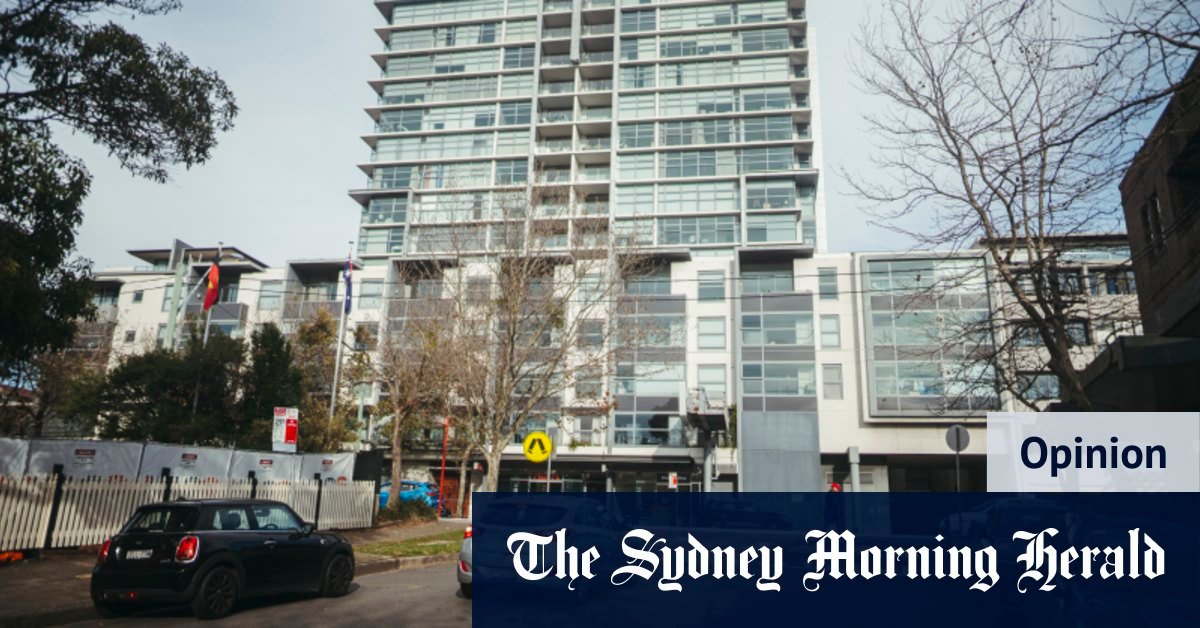
Sydney’s newest build-to-rent project was developed on top of a former church.Credit: Flavio Brancaleone
Big institutional investors (such as super funds) own plenty of physical assets in this country, from shopping centres to airports. But unlike some overseas markets, our big investors own very little in the way of housing.
The Association of Superannuation Funds of Australia says investment in “build-to-rent” housing in this country is less than 1 per cent of institutional investors’ real estate portfolios, compared with more than 20 per cent in the US.
However, there are signs the market is changing.
Last month, super giants AustralianSuper and HESTA joined forces to buy into a platform called Assemble that is aiming to facilitate large-scale investment from funds in cheaper housing – including build-to-rent, build-to-rent-to-buy, and build-to-buy.
More important than this specific deal was what it says about the long journey to turn housing into an institutional asset class. Super funds have previously said that a key barrier to investing in residential real estate was the costs of conducting due diligence on relatively small residential buildings. These costs don’t stack up for funds managing tens or hundreds of billions.
The funds argue a platform like Assemble can help them overcome this issue and invest at “scale,” and they also believe housing is an attractive asset for a bunch of reasons.
HESTA’s chief investment officer Sonya Sawtell-Rickson says property assets sit somewhere between cash (low risk) and higher-risk assets such as private equity.
In theory, affordable housing should also be attractive in an economic downturn because people will still need somewhere to live. The fund would target annual returns in the “high single digits” from property, including affordable housing, she says.
But can investments of these sorts really move the dial in terms of how they affect the housing market?

HESTA’s Sonya Sawtell-Rickson says affordable housing can be a sound investment. Credit: Elke Meitzel
Australian Super says its $500 million investment with Assemble will deliver approximately 1400 new homes over the next three to four years, and it stresses that build-to-rent could become a much bigger market in Australia. HESTA has said it plans to invest about $240 million in build-to-rent projects.
These are welcome moves, but they’re a fraction of the government’s ambitious target of building 1.2 million houses by 2029, and these sorts of numbers clearly won’t move the dial in relation to house prices or rents. The government is also planning to tap super funds as part of its $10 billion Housing Australia Future Fund, which aims to help deliver 30,000 new social and affordable homes over five years.
But although the super sector’s housing investments are pretty small so far, there is still a convincing case that institutional investment would be a worthwhile addition to Australia’s rental market.
The Grattan Institute’s Brendan Coates says the sheer scale of super funds, compared with smaller investors, means they can act differently as landlords, including offering longer-term leases. Super funds invest for the very long term, so they’re likely to hold on to properties rather than sell.
He argues that it’s worth encouraging more super funds to invest in rental properties because the big rise in house prices in Australia means more people are going to be renting in the longer term.
Loading
Even so, we shouldn’t overstate how big a role super will play in housing, and it’s also notable that some funds aren’t convinced that housing investments stack up for their members.
Chief investment officer of UniSuper John Pearce, for example, last month said he was less keen on housing investment partly because it concentrates risk in the portfolio. The fund already has plenty of exposure to housing through its holdings of Australian bank shares. “Putting more money into residential housing from a risk diversification perspective. That, to me, doesn’t make a lot of sense for a super fund,” Pearce said.
Meanwhile, the Coalition is making super and housing a key point of difference between the major parties. It’s against encouraging big super funds into housing, while arguing Australians should be allowed to access their compulsory super to buy a property.
So, it’s safe to expect the debate about super and housing will intensify between now and the next federal election. But in truth, that impact of the super funds’ foray into residential property will probably be less dramatic than both sides of the political debate would have you believe.
Ross Gittins is on leave.
Ross Gittins unpacks the economy in an exclusive subscriber-only newsletter. Sign up to receive it every Tuesday evening.





